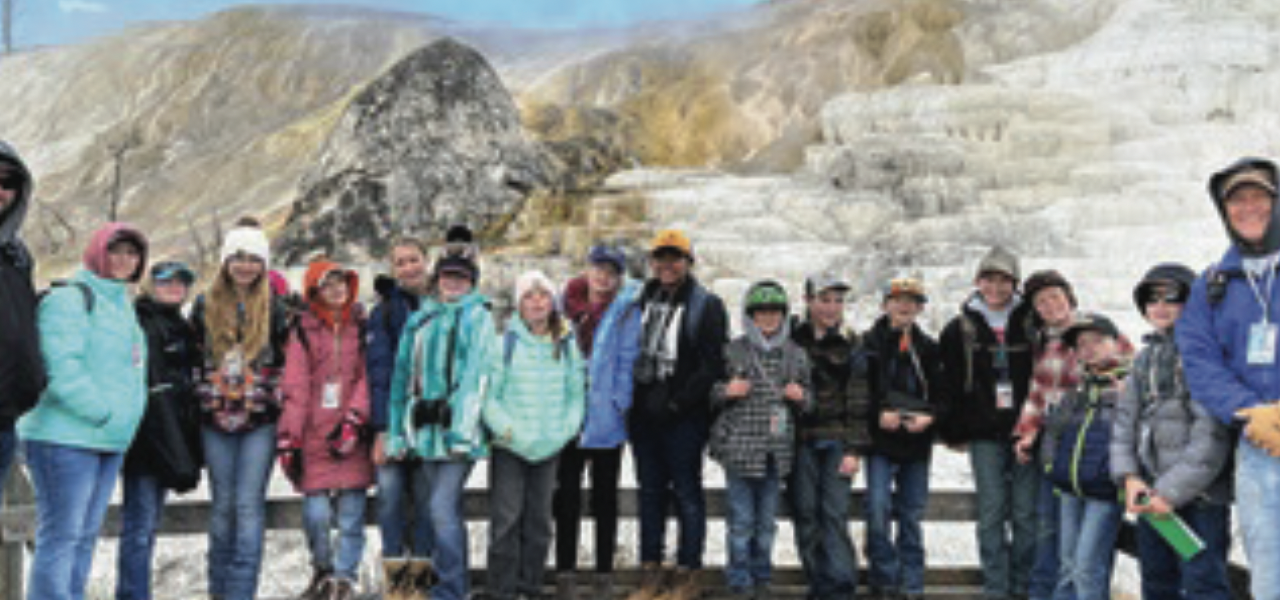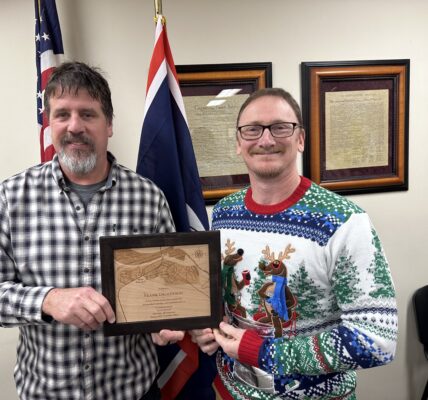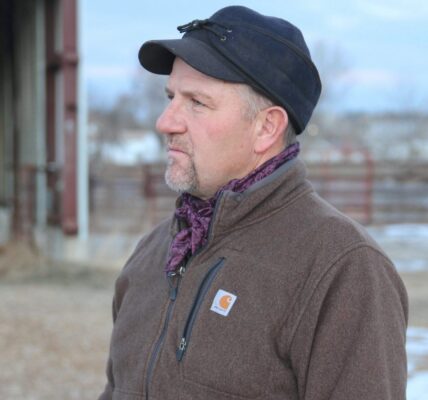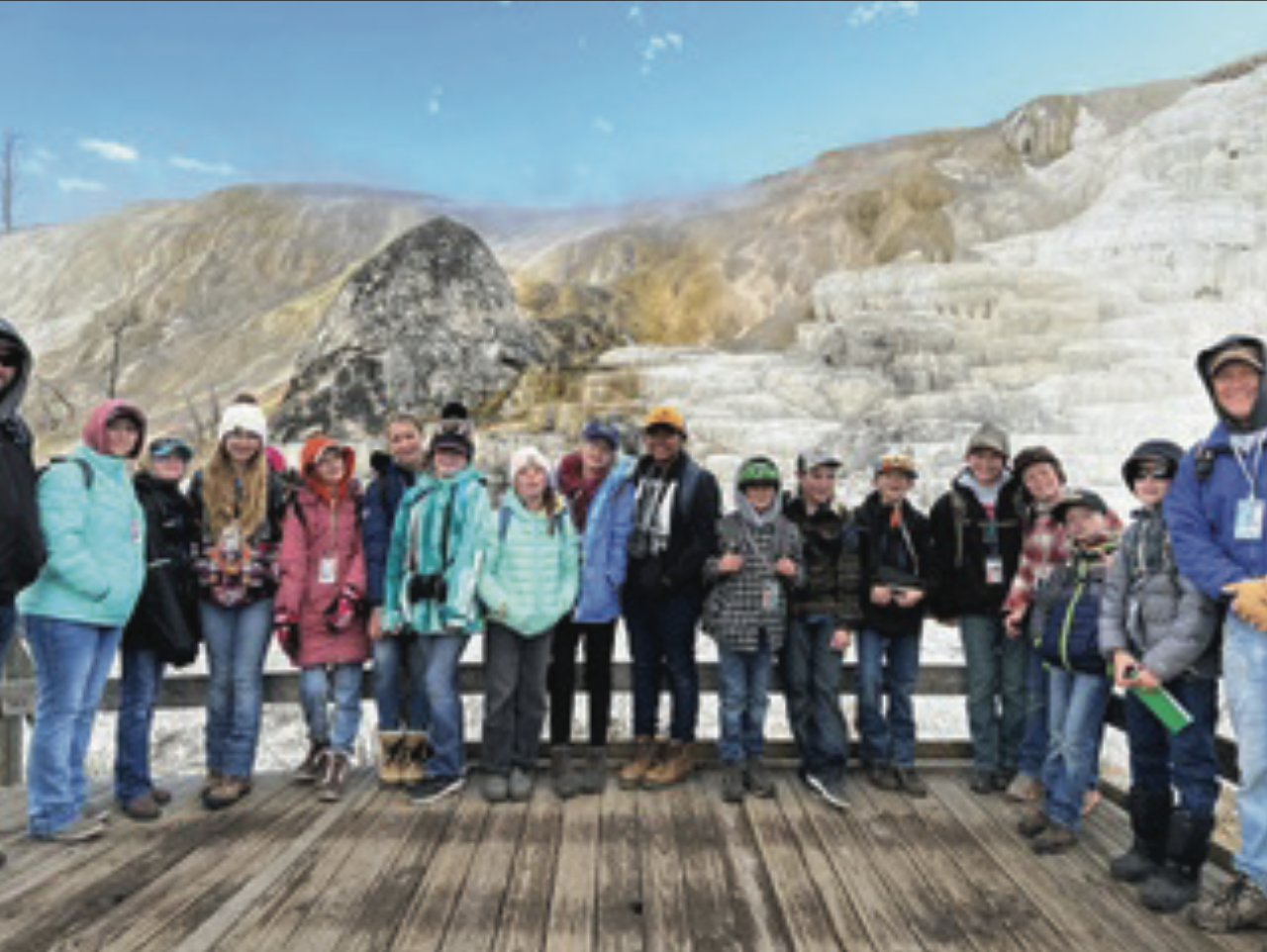
• Studies include all aspects of the iconic national park.
By Jan Moody
SVI Media
“We’re on our way to Yellowstone” was the cry of Mr. Hatch’s Sixth Grade Class on Monday, November 6.
This trip has been a highlight for students at Cokeville Elementary since 2003. Students begin preparing for this incredible trip when they enter elementary school as they participate in fundraisers each year to help fund this amazing opportunity.
The bus pulled out Monday morning at 5:30, arriving in Yellowstone at 2:30 in the afternoon.
They were greeted by Rangers who assisted and participated with them throughout the week.
The students were given a tour, unpacked and then it was off to their first hike of the week. They learned from the rangers about all the sights and sounds they would observe and hear and the importance of looking for items that represented Yellowstone.
There was a bison horn which represented the wildlife–then a rock that said ‘’the magic is preservation”- which means to keep it safe and clean. There was a pine cone which meant the park is changing. From rivers to trees there are different things that change the park. There was an obsidian arrowhead which meant that people were there before it became a park.
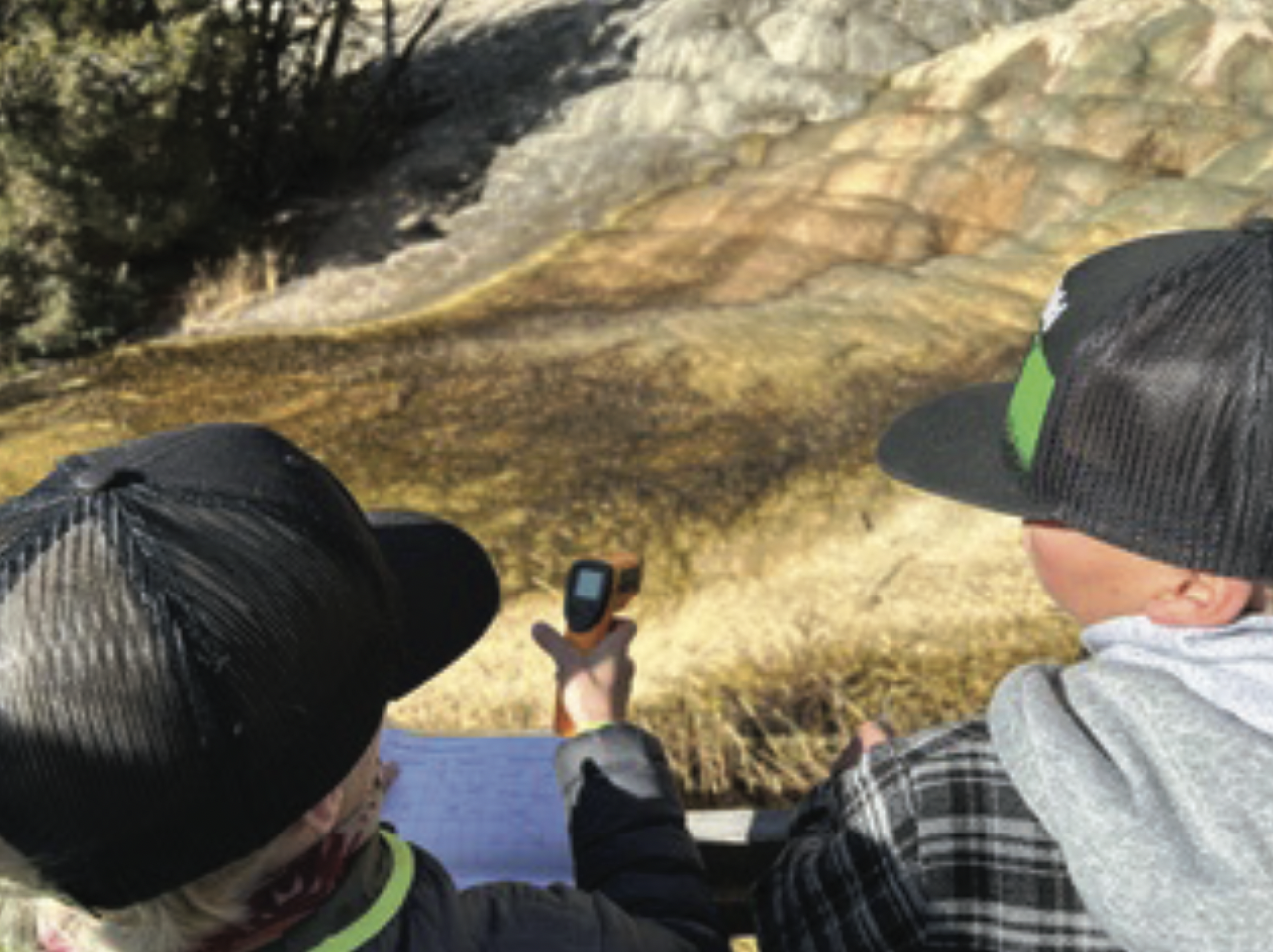
For their class that night they built a little part of a national park out of dirt and rocks. They went through natural disasters, like rain, snow, volcanoes, and floods and how they affect the environment. It taught them that Yellowstone is alive and always changing.
On day two they ventured out to test the temperature and pH of the hot pots. They learned how to do this by testing orange juice. Then it was back on the bus and a trip to the hot pots. They saw travertine terraces. Once they arrived at Mammoth, they put pH strips in the water and measured the pH balance, testing it to see if it was acidic or alkaline. They also tested the temperature.
Another hike took them to the entrance of a cave. Here they explored the surroundings of the cave and wrote poems about geology that had to do with words like caves or rain. The cave had icicles in the entrance. They weren’t allowed to go in because it had carbon dioxide in it. It was a fun day at Mammoth.
The sun rose slowly in the morning on the third day and they awoke once again in spectacular Yellowstone National Park. They had early morning class. The group gathered on the rugs in the mess hall after breakfast and learned about abiotic and biotic things. Biotic means things that are currently living, will live and have lived.
Abiotic is pretty much the opposite. It describes things that aren’t living, will never live, and have never lived. Dirt is abiotic, trees are biotic. Then, they all hopped on the yellow bus and headed to buffalo ranch. They arrived and went on a hike and climbed all the way up this neat little hill. On the hill there were many elk and buffalo skulls. They studied the bones very cautiously and carefully. They found that one buffalo head was newer because it had its flesh and hair. They also knew that one of the buffalo was a girl because its horns were curved and the other was a male because its horns went out then up.
They climbed a little higher and reached a stream. They studied the stream and wrote about moss and rocks. The rocks are biotic and the trees are abiotic.
They chose things in nature that were biotic and abiotic and talked about how they interact with each other. They made a map of the stream and the things they found. Their adventure continued as they found a bull elk carcass that was super fresh. They circled up around it and talked about how it might have died.
They continued hiking. They reached the top of the hill and about 150 yards ahead was a herd of bison. They watched them for awhile until they ran away. They continued their journey.
The rangers informed them that there was a surprise up ahead. Five minutes later they came to a cage. Long story short, it was where they kept the wolves when they introduced them back into Yellowstone. They explored the cage and then headed back to the bus.
Halfway back they stopped and played a super fun game called Camouflage. It represented how prey use their environment to hide from predators. The prey (the people who weren’t it) hid in an open sagebrush field.
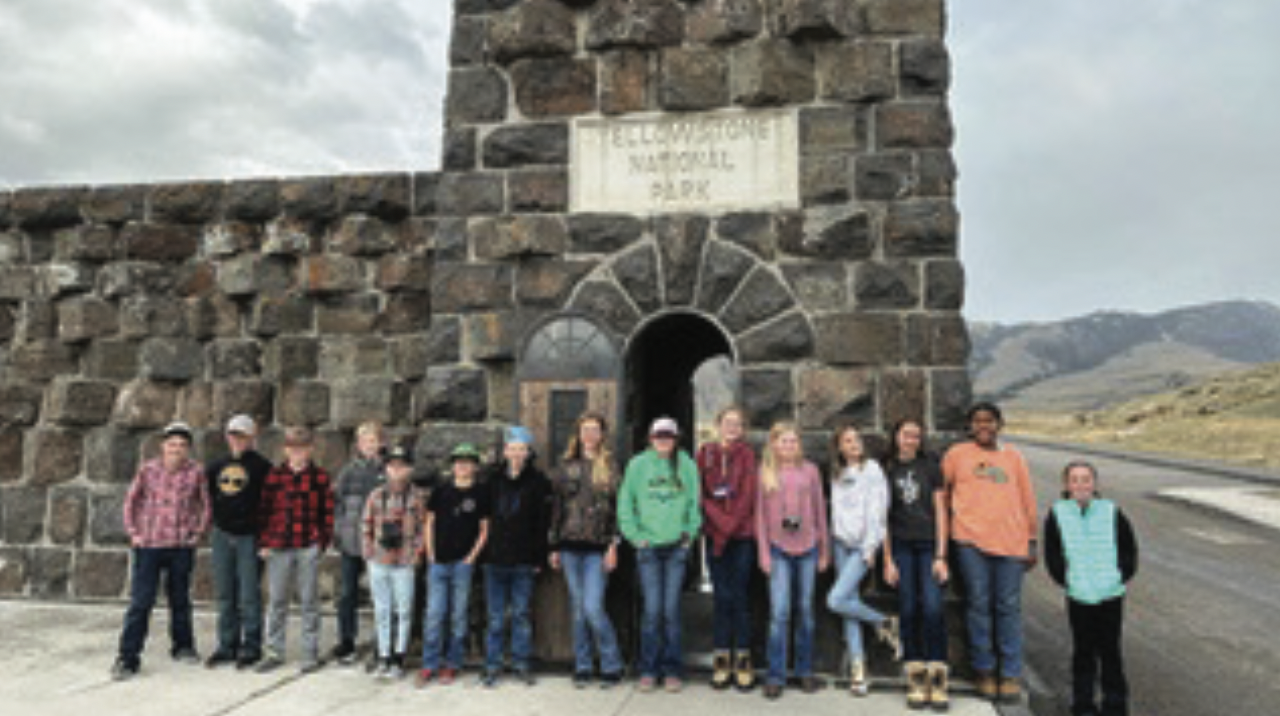
The predator (the person who was it) couldn’t move their feet and tried to find you. It was super fun. They saw hundreds of buffalo and some huge bull elk on the way back to Mammoth. It was a fun day.
The last day in beautiful Yellowstone brought two cool hikes. The first hike of the day was in Mammoth. They set out on the hike. It was not a long hike. They stopped halfway through to sit on the hillside and draw the scenery. It was so beautiful.
Once they finished their drawing, they had a gallery walk. They hiked to a Crow wickiup. After admiring it for a while they wrote a story about what life may have been like back then. Their next stop was the washed-out road from the flood to see the damage that was done by the spring flood. They played a game that showed them about the population of the elk when the wolves were reintroduced and then they were off to find a wolf collar. They used GPS to locate it. That evening, the rangers shared Native American legends and then they watched each other’s “Legends of Yellowstone” skits.
On Friday, they cleaned up their dorms and the mess hall and made the long journey home. It was an incredible week.
The educational value of this trip is unmatched. There is no better place to learn about nature than in nature itself. These students are blessed to live so close to one of the most beautiful places on the earth. Special thanks to everyone responsible in any way for making this once in a lifetime opportunity available for these students.

